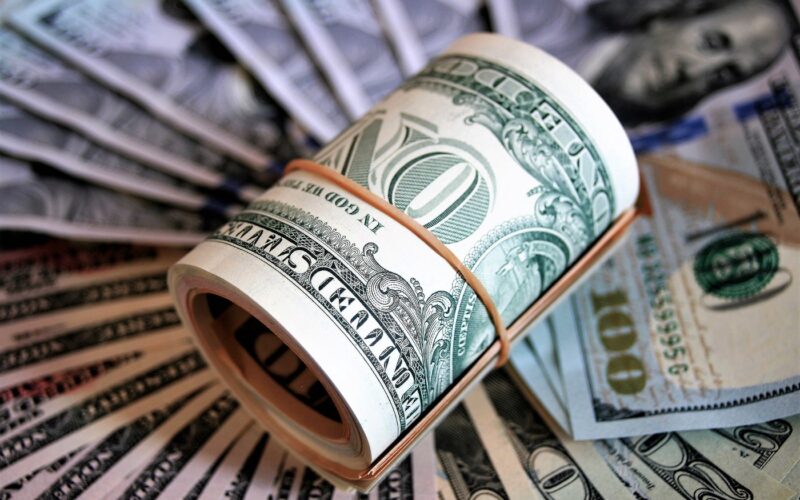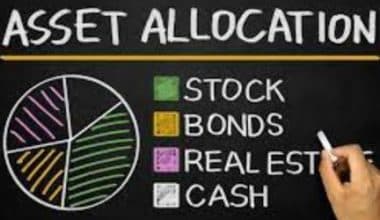As bond prices move against interest rates, bond prices decline as interest rates climb. Nevertheless, Treasury bonds are a safe investment with a fixed interest rate paid semi-annually till maturity. Bonds are crucial in a portfolio’s asset allocation since their stable return helps balance the volatility of equities prices. Treasury yield, on the other hand, is the percentage return on investment on the US government’s debt obligations. So, are you a beginner willing to start investing in bonds? Then you need this. However, before you start investing, it is essential to acquire more knowledge about them and how they work, yield on a 10-year treasury note live chart.
Now let’s get to work.
10 Year Treasury Yield
The Treasury yield is the effective interest rate that the US government pays to borrow money for various periods.
However, Treasury rates affect more than just how much the government is paying to obtain credit. These factors also influence Interest rates for loans to purchase real estate as well as properties, automobiles, as well as types of equipment in a similar way. Treasury yields also reflect investor sentiment. Generally, the higher long-term US Treasury yields, the more optimistic investors are about the economy. But high long-term yields might also predict future inflation.
In short, anytime the US government is in need of funds for initiatives like infrastructure improvements, issuing debt through the US Treasury. However, Treasury bills (T-bills), Treasury notes (T-notes), and Treasury bonds (T-bonds) are all debt securities issued by the government.
- T- Bills – A security that matures in less than one year.
- Treasury Notes – A security that matures in one to ten years.
- Treasury Bonds – A security that takes more than ten years to reach maturity.
How Treasury Yield Works
Treasury bonds are low-risk investments since they have the backing of the US government’s faith and credit. Generally, those who buy Treasury bonds lend the US government money. And as a reimbursement for the borrowing, the government pays interest to the investors as the cost of borrowing. However, the market forces determine the return on capital necessary for stockholders to lend the government money.
Generally, Treasury bills have a set interest rate and the highest bidder gets to buy them at the maiden auction. Meanwhile, whenever there is a large market for security, the pricing will be bid up over its face value. However, the government only repays the instrument’s face value at maturity, thereby lowering the yield. A bondholder with bonds worth $10,000 will only get $10,000 back when it matures. On the other hand, when there is a fall, consumer and corporate lending rates decline.
Likewise, if the market for Treasury bonds falls, Treasury yield rises to compensate. However, when demand is minimal, investors will just pay below average. This nevertheless enhances the investor’s yield. This is because he can buy the bond at a discount price and get the full face value back at maturity. So because the government pays greater interest rates to attract more potential buyers in future auctions.
Each Treasury security has a unique yield. Normally, longer-term Treasury bonds yield more than shorter-term Treasury bonds. The short maturity of Treasury bills makes them the lowest yielding among the T-notes and T-bonds. The 3-month T-bill yield is 0.711%, the 10-year is 2.628%, and the 30-year is 2.624%, while the 5-year US government bond stands at 2.7% as of April 5, 2022. Meanwhile, all of these yields are available on the Treasury’s website daily.
Estimating the Yield on a 10-Year Treasury Note
The 10-year Treasury note is the most liquid and widely traded debt asset in the US issued by the federal government. Typically, the 10-year note’s yield, first fixed at auction, is eventually set by buyers and sellers on the open market.
The 10-year US Treasury Note is a debt obligation issued by the US Treasury Department with a 10-year maturity. It pays a fixed rate of return every six months. The U.S. Govt pays per value. Par value is the actual or market value(face value) of a bond, stock, or coupon. Likewise, it is the value of the note to the holder at maturity. They aim at helping government or companies pay off debts and at the same time cover ongoing expenses like employee salaries.
Treasury notes have a maximum period of ten years. However, the 10 year US Treasury notes are the most mature. Nevertheless, there are others that mature in two-, three-, five-, and seven years. And until maturity, these notes usually pay interest every six months. Meanwhile, the 10-year Treasury note has a fixed rate that influences other market interest rates.
Phenomenon of Recession
Investors seeking safety seek out 10-year US Treasuries when markets are tumultuous. When the US Treasury auctions debt securities, overwhelming demand often encourages investors to bid at or above Par Value.
Even if it happens that Treasury-note yield diminishes, investors are only looking for safe investments. Generally, during a recession, the yield is usually lower.
Phase of Expansion
Meanwhile, in an expansionary period of the business cycle, demand for 10-year Treasuries is low. This is because many other debt instruments are more appealing. However, during these circumstances, investors choose riskier investments for bigger returns. This is a result of the Treasury bonds yielding so little. And as such. investors will shift their funds to higher-yielding alternatives.
Yield Calculation for a 10-Year Treasury Note
The interest rates of other debt products are directly influenced by the demand for 10-year Treasury Notes. However, there will be an interest rate hike on longer-term debt as a result of the yield on 10-year T-notes rising at a period where there is low demand. As a result, investors will demand a higher interest rate on long-term debt that is not guaranteed by the US Treasury.
Initial Percentage Rate
Government auctions are used to sell 10-year Treasuries. Supply and demand determine yields. However, demand for a note decreases whenever there is a lot of interest, but the yield rises when the demand is low. Immediately following the auction, individual investors will have permission to purchase or sell bonds in the open market
Market Price
The secondary market is where bonds trade once their auction price is established. Demand and supply, as well as additional factors such as broker commission, all play a role in determining the yield on secondary market bonds. Normally, bonds do have a defined maturity date, therefore time is also a consideration in the secondary market. However, the length of time until a bond’s maturity shortens as days go by, resulting in a lower yield.
Calculations for Yield
The current yield and the yield to maturity are the two most important yield computations when analyzing a bond. A bond’s current yield is the annual interest payment divided by the bond’s current price. If you buy a $1,000 bond with a 3% interest rate or coupon rate, you’ll receive $30 in interest every year on your investment.
Three percent of the bond’s price is $1,000 in current yield. Your present yield would be 3.33 percent if the bond’s value had decreased to $900, or $30 divided by $900. A price increase to $1,100 reduces your yield to 2.73 percent.
On the other hand, to calculate yield to maturity, a bondholder must take into account interest payments, the rise or decline in the bond’s value, and the reinvestment of money into the bond’s principal. However, if you buy a 4-percent bond for $1,000 at par value, your yield to maturity will be 4 percent as well. This is because the bond’s price will not change at maturity. Even though the annual coupon is 4.5%, you’ll get an extra $100 at maturity when you buy a $900 bond. The following is the formula for calculating the yield to maturity:
- P = the bond’s price
- n = number of periods
- C = coupon payment
- r = the investment’s needed return rate.
- F = stands for the age of security/ maturity value
- t = the period of time during which payment is due
Normally, the math can be intimidating even for experienced investors. However, there are many financial calculators as well as websites that can help you figure out the yield to maturity. This is if you know the par value, interest rate, current price, number of payments per year, and the remaining time until maturity of the bond you’re interested in purchasing.
Chart 10 Year Treasury Yield
Generally, the 10 Year Treasury Rate is the yield on 10-year Treasury securities that the US government issue. And the 10-year treasury yield is shown at the long end of the curve. However, to value the markets or investment, many analysts utilize the 10-year yield as the risk-free rate.
The 10-year Treasury rate was 2.54% on April 5, 2022, down from 2.42 percent the day before and 1.73 percent last year. However, the long-term average is 4.28 percent which is lower than this current rate; According to The US Department of the Treasury.
Treasury notes and bond data are indicative OTC quotations. Nevertheless, if the note or bond is callable before maturity, the yield is computed to the earliest call date.
OTC- Over-The-Counter
For more on the 10 years Treasury Yield chart as well as real-life data on US 10 Year Treasury Note, you can visit the Wall Street Journal.
10 Year Treasury Yield FAQs
What are Treasury bonds paying now?
The composite rate for I bonds issued from November 2021 through April 2022 is 7.12 percent. This rate applies for the first six months you own the bond
How do I invest in 10 year treasury?
The U.S. Treasury sells 10-year T-notes and notes of shorter maturities, as well as T-bills and bonds, directly through the TreasuryDirect website via competitive or noncompetitive bidding, with a minimum purchase of $100 and in $100 increments. They can also be purchased indirectly through a bank or broker
What is 10 Year Treasury yield historical chart?
10 Year Treasury Rate 54 Year Historical Chart is an interactive chart showing the daily 10-year treasury yield back to 1962. The current 10-year treasury yield as of April 05, 2022, is 2.54% which can be seen on the chart.
Should I buy bonds when interest rates are low?
In low-interest rate environments, bonds may become less attractive to investors than other asset classes. Bonds, especially government-backed bonds, typically have lower yields, but these returns are more consistent and reliable over a number of years than stocks, making them appealing to some investors.






